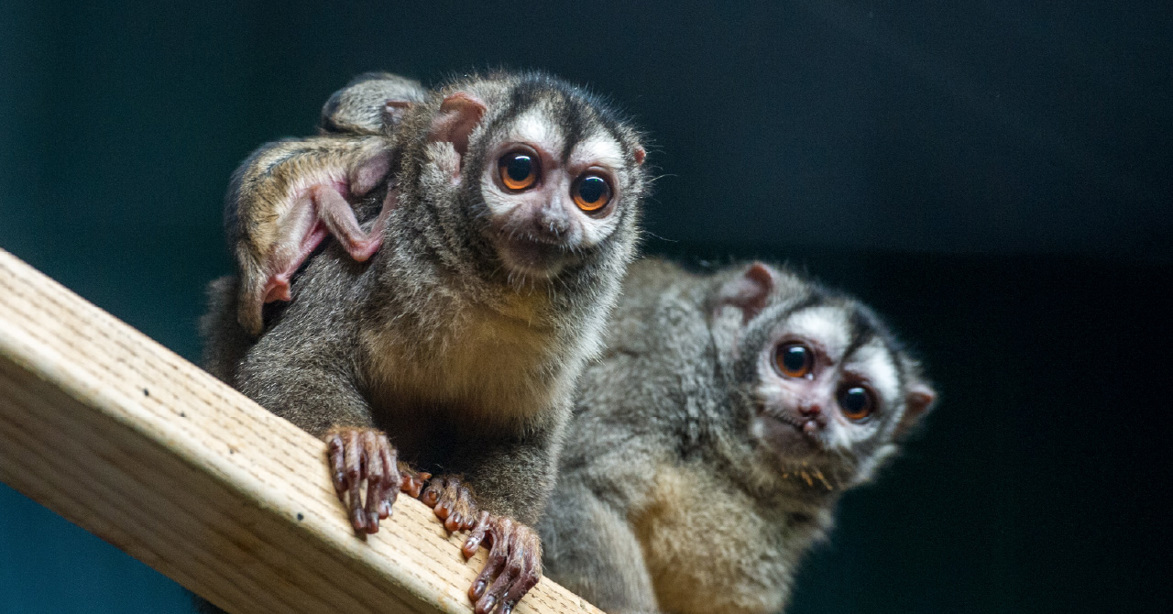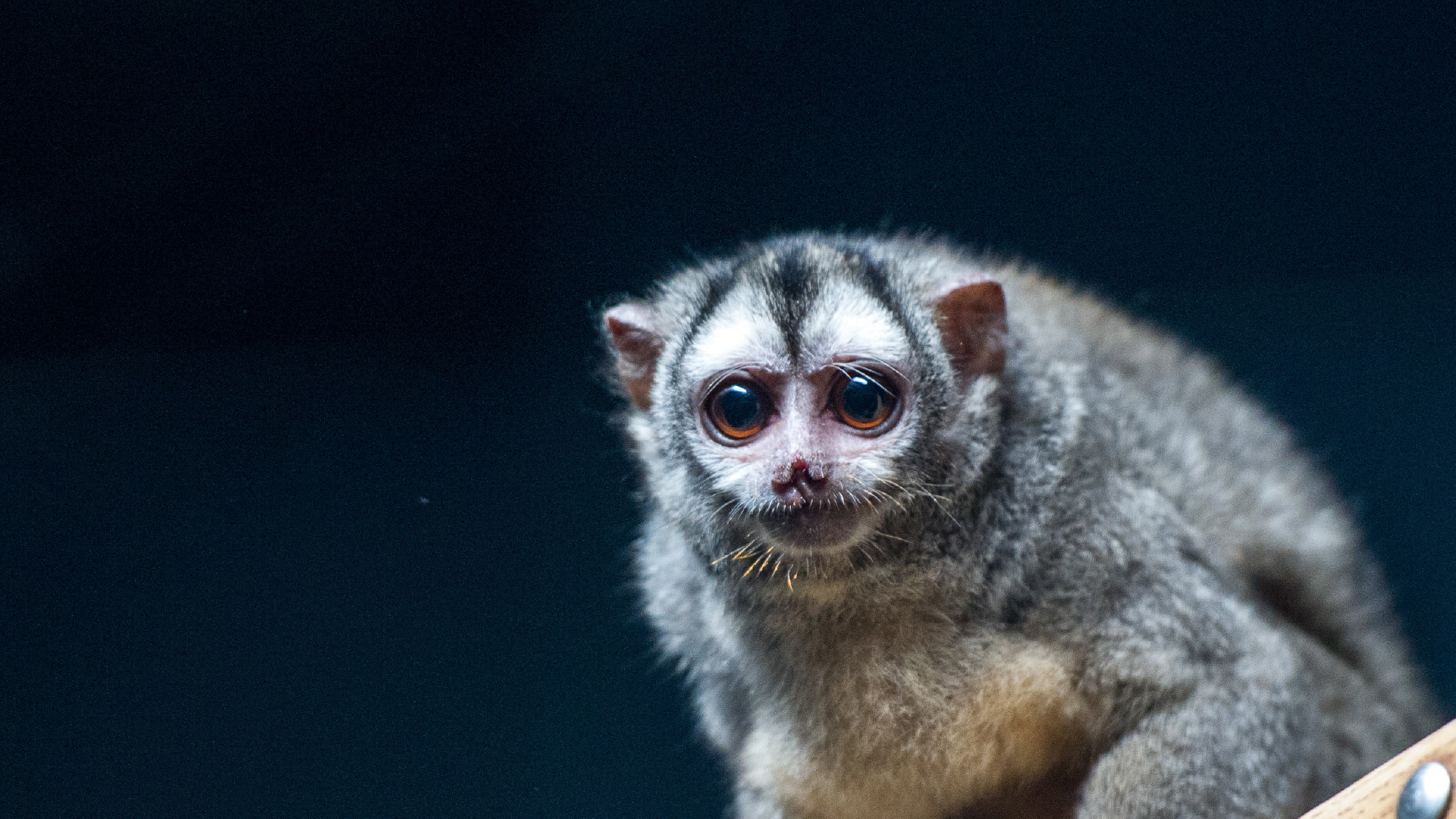Grey-Legged Night Monkey
Aotus griseimembra
Habitat
Primary and secondary tropical rainforest
Food
Fruit, nectar and insects
Weight
± 0,8 – 1,0 kg
Age
15 to 20 years
IUCN Status
Kwetsbaar
Appearance
Grey-legged night monkeys are nocturnal primates. They are especially recognisable by their large eyes with which they can see very well in the dark. Grey-legged night monkeys have grey-brown, woolly fur and a black tail. They have an olfactory gland on their behind. They use that to deposit a scent to communicate with other animals, to mark out their territory, for example.
Habitat
In the wild, night monkeys live in the tropical rainforests of northern Colombia and north-west Venezuela (in South America).
Lifestyle
Grey-legged night monkeys live in groups of two to four animals. Each group contains at least one adult pair. This pair is monogamous and shares the raising of its offspring.
Behaviour
Grey-legged night monkeys are most active during the early evening and just before nightfall During the day they sleep in hollow tree trunks or hidden among tree ferns and lianas. Nice and safe from predators! On clear nights when the moon is full, young adult males make very loud calling sounds to attract females. Their call sounds similar to a night bird’s call. That is why these night monkeys are also known as owl monkeys. They also communicate through sounds and scents. Thanks to their special throat sac, they can make their sounds extra loud. They wash themselves with urine, too: they rub urine on their hands and feet in order to leave scent trails along branches. Capuchins and squirrel monkeys do this too, by the way.

Reproduction
Night monkeys take very good care of their offspring. Males are also closely involved and play an important part in raising the young. A newborn night monkey will grab hold of its mother’s belly after being born. After about three weeks, the young primate moves onto its father or mother’s back. Males reach ‘puberty’ when they are one year old. After three years, the males and females are ready to reproduce. Then they leave their natal group. They do this gradually, spending more and more time away from the group and sleeping away from the family more and more often. This way they prepare slowly for when they will really ‘leave home’.
Situation in the wild
In the wild, grey-legged night monkeys are vulnerable. That is because more and more of the forests they inhabit are disappearing. Many night monkeys were also taken from the wild. They were used for important medical research into malaria. Because of this the population has decreased by 30% in recent years. It is difficult to determine precisely how many night monkeys are left in the wild. One reason for this is that it is not always clear exactly where they live. Of the eleven species of night monkeys, this is probably the most endangered one.

At Apenheul
At Apenheul, the grey-legged night monkeys live in the nocturnal enclosure above the Tree-Top Walk. We have inverted the rhythm of day and night there: it is dark there during the day and light at night. That way you get to see the animals when they are awake!
Population management programme
Apenheul is part of the European endangered species programme (EEP) for night monkeys. We work together with other international zoos, enabling us to ensure a genetically healthy population of night monkeys is maintained in captivity.
Fun facts
- Night monkeys are also known as ‘owl monkeys’. Their hollow call sounds like the call of large night birds. Moreover, they have large eyes, like an owl’s.
- The eyes of most nocturnally active animals have a special adaptation that enables them to see well in the dark. This is known as the Tapetum lucidum, which means something like ‘tapestry of light’. This is a reflective layer in the eye. However, night monkeys do not have this adaptation which is why scientists suspect that they were not always nocturnally active. It could be that competition with other species of primates forced them to change their ‘working hours’.
Want to see the Grey-Legged Night Monkeys at Apenheul?
Get your tickets now and spot all the primate species!

Welcome to Apenheul
Open every day
Park open from Friday 25 April, 10.00 hour